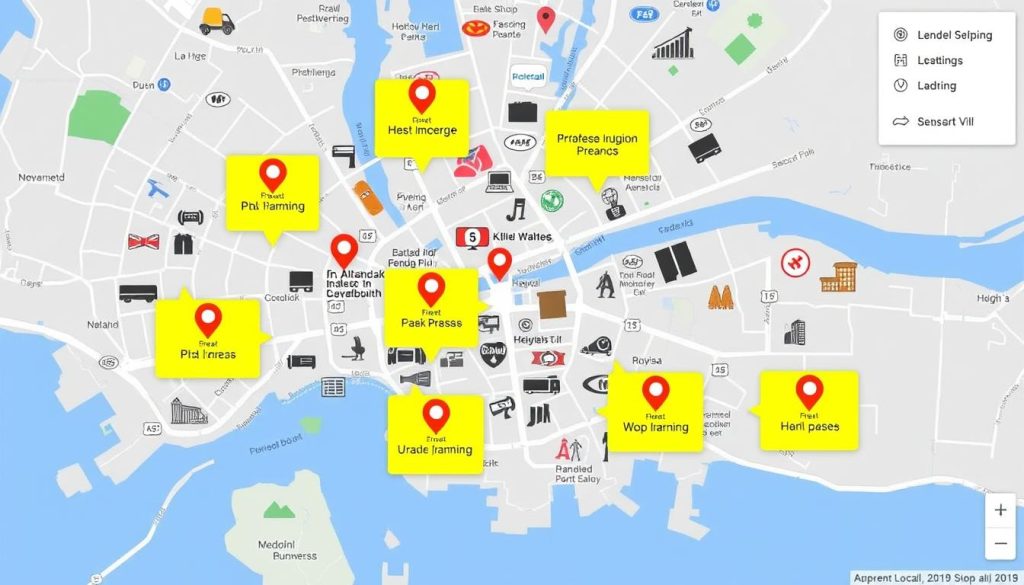In today’s digital age, harnessing the power of search engine optimization (SEO) is crucial for capturing leads and growing your online presence. This comprehensive guide will delve into the strategies and techniques you can leverage to optimize your website, attract your target audience, and convert visitors into valuable leads. From understanding your ideal customer to implementing technical SEO best practices, we’ll cover all the essential elements needed to succeed in the competitive world of online lead generation.
Key Takeaways
- Identify your target audience and understand their pain points and interests
- Conduct thorough keyword research to optimize your content and reach your ideal customers
- Optimize your website content, structure, and on-page elements for improved search visibility
- Build high-quality backlinks to enhance your domain authority and credibility
- Implement technical SEO best practices, such as site speed optimization and mobile-friendly design
- Continuously monitor and analyze your SEO performance to make data-driven decisions
- Stay up-to-date with the latest SEO trends and algorithm updates
Understand Your Target Audience
Capturing leads through search engine optimization (SEO) begins with a deep understanding of your target audience. By identifying your ideal customer and researching their pain points and interests, you can create a tailored SEO strategy that resonates with your potential clients.
Identifying Your Ideal Customer
Start by developing detailed buyer personas that encompass the demographics, behaviors, and pain points of your target audience. Consider factors such as age, gender, location, income level, interests, and online browsing habits. This information will help you create content and optimize your website to attract the right people.
Researching Their Pain Points and Interests
Conduct thorough customer research to gain insights into the challenges and preferences of your target audience. Analyze online forums, social media, and industry publications to understand their pain points, concerns, and the type of content they engage with. This research will inform your SEO strategy, allowing you to create content that addresses their specific needs and interests.
| Buyer Persona | Pain Points | Interests |
|---|---|---|
| Small Business Owner | Lack of time, limited marketing resources, difficulty finding new customers | Digital marketing, lead generation, cost-effective advertising |
| Busy Professional | Limited time for research, overwhelmed by options, seeking quick solutions | Productivity, time management, work-life balance |
| Health-Conscious Millennial | Concerns about environmental impact, desire for personalized solutions, skepticism towards traditional approaches | Sustainability, holistic wellness, natural products |
By understanding your target audience, you can create a more effective SEO strategy that speaks directly to their needs and interests, ultimately helping you capture more qualified leads online.
Conduct Keyword Research
Effective keyword research is the foundation of a successful SEO strategy. To uncover the keywords and phrases your target audience is searching for, it’s essential to utilize powerful keyword research tools like Google Keyword Planner, Ahrefs, and SEMrush.
These tools provide valuable insights into the search volume, competition, and relevance of various keywords. By analyzing this data, you can identify the most valuable keywords to optimize your content around, including long-tail keywords that can drive highly targeted traffic to your website.
Using Keyword Research Tools
To get started with your keyword research, consider the following steps:
- Brainstorm a list of relevant topics and phrases related to your business or industry.
- Use keyword research tools to analyze the search volume and competition for these keywords.
- Identify long-tail keywords that are less competitive but still relevant to your target audience.
- Prioritize the keywords based on their potential to drive qualified leads and conversions.
- Incorporate the selected keywords into your website content, meta tags, and other SEO elements.
| Keyword Research Tool | Key Features | Pricing |
|---|---|---|
| Google Keyword Planner |
|
Free (part of Google Ads) |
| Ahrefs |
|
Starts at $99/month |
| SEMrush |
|
Starts at $119/month |

“Effective keyword research is crucial for creating content that resonates with your target audience and drives meaningful results.”
By leveraging these powerful keyword research tools, you can uncover the most valuable keywords to optimize your website and content, ultimately capturing the attention of your ideal customers and generating high-quality leads.
Optimize Your Website Content
Crafting informative, engaging, and user-intent-focused content is crucial for successful content optimization and on-page SEO. Once you have a solid understanding of your target audience and the keywords they are searching for, it’s time to put that knowledge into action.
Start by creating content that addresses your audience’s pain points and interests. Incorporate your target keywords naturally throughout your web pages, blog posts, and other content assets, ensuring a seamless user experience. Avoid keyword stuffing, as this can hurt your on-page SEO and negatively impact the readability and value of your content.
“The key to effective content optimization is to strike a balance between informative and engaging content that aligns with your audience’s user intent.”
To optimize your website content, consider the following strategies:
- Conduct thorough keyword research to identify the most relevant and high-performing terms for your business.
- Develop a content strategy that addresses your audience’s pain points and aligns with their search queries.
- Incorporate your target keywords naturally throughout your content, ensuring a seamless reading experience.
- Optimize your page titles, meta descriptions, and header tags to improve on-page SEO.
- Regularly audit and update your existing content to keep it fresh and relevant.
By focusing on content optimization and user-intent-driven content, you can significantly improve your website’s on-page SEO and attract more qualified leads online.
Leverage On-Page SEO Techniques
Optimizing your website’s on-page elements is a crucial aspect of search engine optimization (SEO). By strategically enhancing your title tags, meta descriptions, header tags, and content structure, you can significantly improve the visibility and user experience of your web pages in search engine results.
Title Tags and Meta Descriptions
Your title tags and meta descriptions serve as the first impression of your web page in search engine results. Craft compelling and informative title tags that accurately reflect the content of your page, incorporating relevant keywords. Similarly, craft captivating meta descriptions that entice users to click through to your website. These on-page SEO elements play a vital role in attracting potential leads and driving traffic to your online presence.
Header Tags and Content Structure
Organizing your content with proper header tags (H1, H2, H3) ensures a logical and user-friendly flow. The H1 tag should clearly communicate the main topic of the page, while H2 and H3 tags should break down the content into easily digestible sections and subsections. This structured approach not only enhances the readability of your content but also signals to search engines the hierarchical importance of your information, improving on-page SEO and the overall user experience.
| On-Page SEO Element | Best Practices |
|---|---|
| Title Tags |
|
| Meta Descriptions |
|
| Header Tags (H1, H2, H3) |
|

By optimizing these on-page SEO elements, you can enhance the visibility, relevance, and user experience of your website, ultimately converting more leads and driving business growth.
Build High-Quality Backlinks
Earning quality backlinks from authoritative and relevant websites is a crucial part of a successful SEO strategy. Engaging in strategic link building activities like guest posting, influencer outreach, and acquiring links from resource pages can significantly boost your website’s domain authority and visibility in search engine results.
Leveraging these link-building tactics can help you establish your brand as an industry authority, drive referral traffic, and ultimately, improve your overall search engine rankings. By focusing on creating high-quality, valuable content and strategically placing it on relevant, high-authority sites, you can build a strong backlink profile that search engines will reward.
Guest Posting
One effective way to earn quality backlinks is through guest posting. Reaching out to relevant industry blogs and websites to contribute guest articles can not only expose your brand to a new audience but also secure valuable backlinks pointing to your site. When selecting guest posting opportunities, ensure the host site is reputable, relevant, and maintains a strong online presence.
Influencer Outreach
Collaborating with industry influencers can also be a powerful link-building strategy. By providing valuable content or resources to influential figures in your niche, you can earn backlinks and increase your brand’s visibility. Carefully research and identify influential individuals or organizations that align with your target audience and brand, then engage in mutually beneficial partnerships.
Building a strong backlink profile takes time and effort, but the benefits can be significant. By consistently creating high-quality content and leveraging strategic link-building tactics, you can enhance your website’s domain authority and improve your overall search engine rankings.
Utilize Local SEO Strategies
As a business owner, it’s crucial to optimize your online presence for local search if you serve a specific geographic area. By implementing effective local SEO techniques, you can increase your visibility in local search results and attract more customers from your community.
Optimizing for Local Search
The first step in leveraging local SEO is to claim and optimize your Google My Business (GMB) listing. This free tool allows you to manage your business information, including your name, address, phone number, and hours of operation. Ensuring your GMB listing is up-to-date and accurately reflects your business can significantly improve your local search rankings.
Creating Local Citations
In addition to optimizing your GMB listing, building high-quality local citations is essential for local SEO. Local citations are online references to your business’s name, address, and phone number (NAP) on various directories, websites, and social media platforms. Consistent NAP information across these citations helps search engines understand the legitimacy and location of your business, ultimately boosting your local search visibility.
To create effective local citations, you should:
- Submit your business information to popular online directories, such as Yelp, Yellowpages, and Bing Places.
- Ensure your NAP information is consistent across all citations, including your website, social media profiles, and local directories.
- Encourage customers to leave positive reviews on platforms like Google, Facebook, and Tripadvisor, as these can also contribute to your local search rankings.
| Local SEO Strategy | Benefits |
|---|---|
| Optimizing Google My Business | Improved local search rankings, increased visibility, and better customer engagement. |
| Creating Local Citations | Enhances NAP consistency, strengthens online presence, and boosts local search authority. |
| Generating Positive Reviews | Builds trust, social proof, and brand reputation, leading to more local customers. |
By leveraging these local SEO strategies, you can effectively capture leads from your target local audience and drive more business to your physical or online storefront.

How to Use SEO to Capture Leads Online
The ultimate goal of leveraging SEO (search engine optimization) is to drive targeted traffic to your website and convert those visitors into valuable leads. To effectively use SEO for lead generation, you need to focus on optimizing your website for lead capture.
One of the most crucial elements in this process is strategically placing calls-to-action (CTAs) throughout your website. These CTAs should encourage visitors to take a specific action, such as signing up for a newsletter, downloading a free resource, or requesting a consultation. By making it easy for visitors to convert, you can significantly improve your lead capture rate.
In addition to CTAs, offering lead magnets can be a highly effective way to capture leads. Lead magnets are valuable, downloadable content, such as ebooks, webinars, or free trials, that visitors can access in exchange for their contact information. This not only helps you generate leads but also allows you to provide your audience with content that addresses their pain points and interests.
Another essential component of using SEO for lead generation is conversion rate optimization (CRO). This involves testing and refining your website’s design, content, and user experience to encourage visitors to take the desired action. By continuously analyzing and improving your website’s performance, you can maximize your conversion rate and turn more of your website traffic into qualified leads.
| Technique | Description | Benefits |
|---|---|---|
| Calls-to-Action (CTAs) | Strategically placed buttons or links that encourage visitors to take a specific action. | Improved lead capture rate, increased conversions. |
| Lead Magnets | Valuable, downloadable content that visitors can access in exchange for their contact information. | Generate high-quality leads, provide value to your audience. |
| Conversion Rate Optimization (CRO) | Continually testing and refining your website’s design, content, and user experience to improve conversion rates. | Maximize the number of website visitors that convert into leads or customers. |
By incorporating these strategies into your SEO efforts, you can effectively leverage search engine optimization to capture high-quality leads and grow your business.
Implement Technical SEO Best Practices
Ensuring your website’s technical foundation is sound is crucial for effective SEO. By focusing on technical SEO, you can optimize your site’s loading speed, implement a mobile-responsive design, and address any other technical issues that may be hindering your search engine visibility and user experience.
Site Speed Optimization
Site speed is a critical factor in both user experience and search engine optimization. Slow-loading websites can frustrate visitors, leading to higher bounce rates and negatively impacting your overall website performance. To optimize your site’s speed, consider the following strategies:
- Minimize image and file sizes without compromising quality
- Leverage browser caching to reduce repeat load times
- Optimize your website’s code and reduce unnecessary scripts
- Use a content delivery network (CDN) to distribute your website’s content more efficiently
Mobile-Friendly Design
In today’s digital landscape, having a mobile-friendly website is essential. With the majority of online searches now conducted on mobile devices, ensuring your website provides a seamless and optimized user experience for mobile users is crucial for both website performance and user experience. Implement a responsive web design that adapts to different screen sizes and devices, making it easy for visitors to navigate and engage with your content on the go.
| Metric | Desktop | Mobile |
|---|---|---|
| Avg. Page Load Time | 2.3 seconds | 3.7 seconds |
| Bounce Rate | 35% | 45% |
| Conversion Rate | 12% | 8% |
The data above highlights the importance of mobile-friendliness and site speed in delivering a positive user experience and driving better website performance. By addressing these technical SEO factors, you can ensure your online presence is optimized for both search engine visibility and user engagement.

Monitor and Analyze Your Results
Regularly monitoring and analyzing your SEO analytics is essential for making informed decisions and adjustments to your digital marketing strategy. Utilizing Google Analytics and other SEO metrics reporting tools, you can track key performance indicators such as organic traffic, conversion rates, and keyword rankings.
Using Google Analytics
Google Analytics is a powerful data analysis tool that provides valuable insights into your website’s performance. By monitoring your SEO metrics and performance tracking data, you can identify areas for improvement and measure the success of your SEO efforts. From tracking visitor behavior to analyzing traffic sources, Google Analytics offers a comprehensive view of your online presence.
Interpreting SEO Metrics
Interpreting the SEO metrics gathered from your analytics tools is crucial for making informed decisions. Key metrics to focus on include organic traffic, bounce rate, time on site, and keyword rankings. By analyzing these SEO analytics, you can gain a deeper understanding of what’s working and what needs to be optimized to drive more qualified leads and conversions.
| SEO Metric | Description | Importance |
|---|---|---|
| Organic Traffic | The number of visitors who find your website through search engine results | Measures the effectiveness of your SEO efforts in driving targeted traffic |
| Bounce Rate | The percentage of visitors who leave your website after viewing only one page | Indicates the relevance and engagement of your website content |
| Time on Site | The average amount of time visitors spend on your website | Reflects the level of user engagement and the value of your content |
| Keyword Rankings | The position of your website in search engine results for specific keywords | Measures the effectiveness of your keyword research and on-page SEO strategies |
By closely monitoring and analyzing these SEO metrics, you can make data-driven decisions to optimize your website, content, and overall SEO strategy. This will help you capture more qualified leads and drive sustainable growth for your business.
Stay Up-to-Date with SEO Trends
In the ever-evolving world of digital marketing, staying ahead of the curve is crucial for any business seeking to maximize its online presence. The landscape of search engine optimization (SEO) is constantly shifting, with search engine algorithms and industry best practices frequently undergoing updates and changes. To ensure your SEO strategy remains effective, it’s essential to maintain a continuous learning mindset and stay informed about the latest SEO trends, algorithm updates, and industry changes.
One of the best ways to stay up-to-date is by actively following reputable SEO blogs, industry publications, and online communities. These resources can provide valuable insights into the evolving SEO landscape, helping you adapt your approach and remain adaptable. Attending webinars, participating in online discussions, and networking with other digital marketing professionals can also be invaluable in keeping your SEO knowledge current and relevant.
“The world of SEO is in a constant state of flux, and those who fail to adapt risk falling behind. Continuous learning and a willingness to embrace change are the keys to success in this dynamic industry.”
By staying informed and continuously learning about the latest SEO trends and best practices, you’ll be better equipped to navigate the ever-changing digital landscape and ensure your website remains visible, relevant, and competitive in the eyes of search engines and your target audience.
| SEO Trend | Description | Impact |
|---|---|---|
| Voice Search Optimization | Optimizing content and website structure for voice-based queries | Increased visibility and engagement with mobile users |
| Video Content Optimization | Optimizing video content for search engine discovery and ranking | Improved user engagement and enhanced brand visibility |
| User Experience (UX) Optimization | Enhancing website design, navigation, and overall user experience | Improved search engine rankings and increased conversions |
Conclusion
In our exploration of leveraging SEO to capture leads online, we’ve covered a wealth of strategies and best practices. From understanding your target audience and conducting thorough keyword research to optimizing your website content and building high-quality backlinks, the key takeaways are clear – a comprehensive approach is essential for SEO success.
By implementing technical SEO best practices, such as site speed optimization and mobile-friendly design, you can ensure that your online presence is not only visible but also engaging and user-friendly. Consistent monitoring and analysis of your SEO metrics will allow you to track your progress and make informed decisions to refine your strategy, ultimately driving more qualified traffic and converting those visitors into valuable leads for your business.
As you move forward, remember to stay up-to-date with the latest SEO trends and continue to adapt your approach as the digital landscape evolves. With a solid understanding of the steps outlined in this article, you’ll be well on your way to harnessing the power of SEO to generate the leads that will propel your business to new heights.




